Family: Pinaceae
Common name: Western hemlock
E-flora BC: https://linnet.geog.ubc.ca/Atlas/Atlas.aspx?sciname=Tsuga%20heterophylla
Wikipedia: https://en.wikipedia.org/wiki/Tsuga_heterophylla
Western hemlock grows alongside Douglas-fir and western redcedar in our forests. It’s not as drought tolerant as Douglas-fir, but can handle drier conditions than western redcedar. It’s a beautiful tree with many distinctive features.
First off, the foliage and growth habit of western hemlock appears ‘softer’ than that of Douglas-fir. The needles are shorter and the branches are weaker, making for a feathery drooping look.
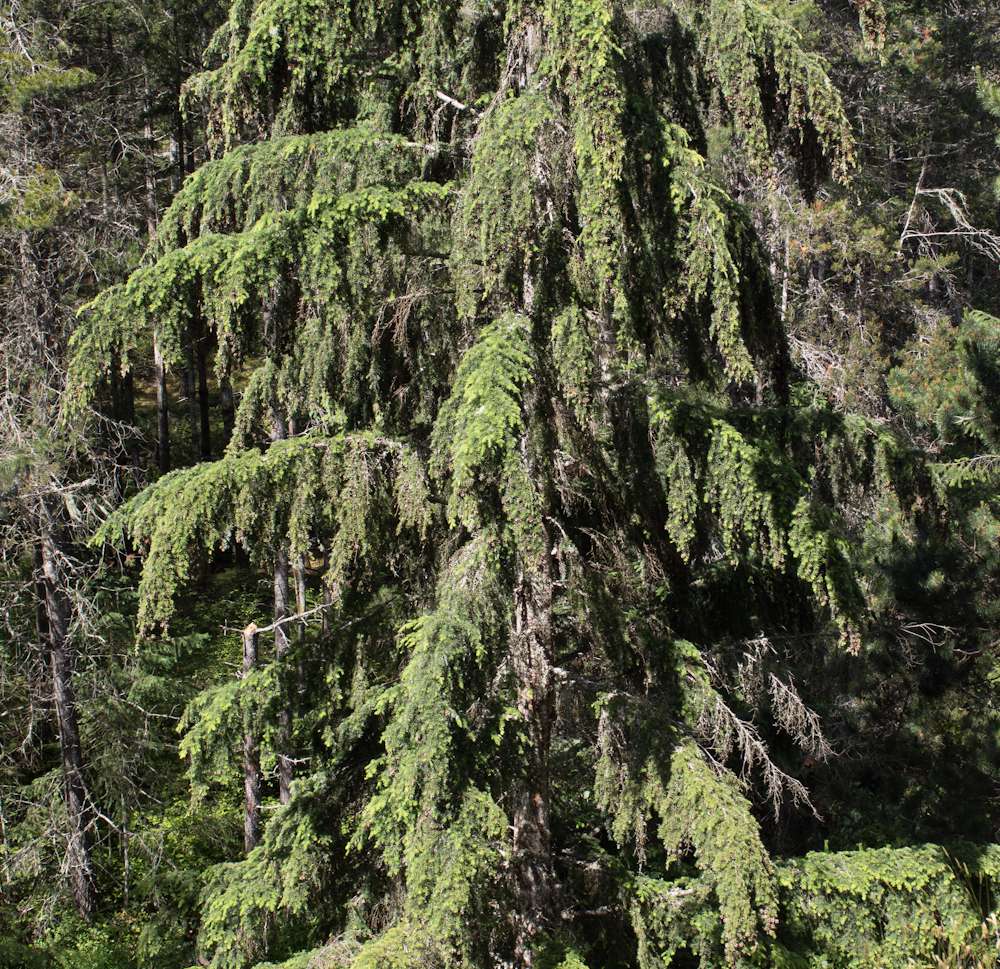
On Western hemlock, the ‘leader’ or top of the tree is characteristically drooping. This is one characteristic to look for when distinguishing it from Douglas-fir.
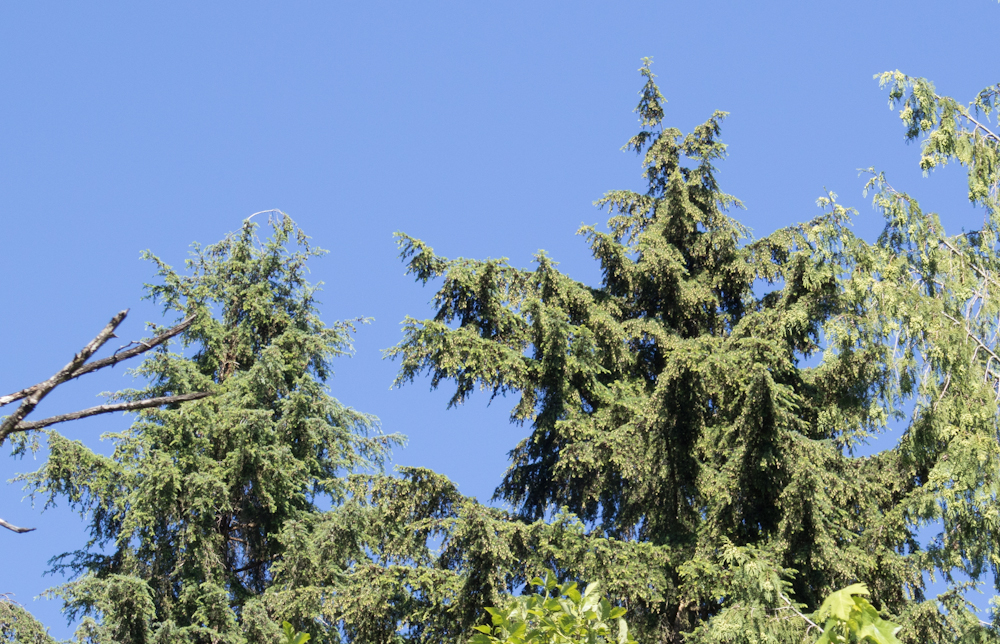
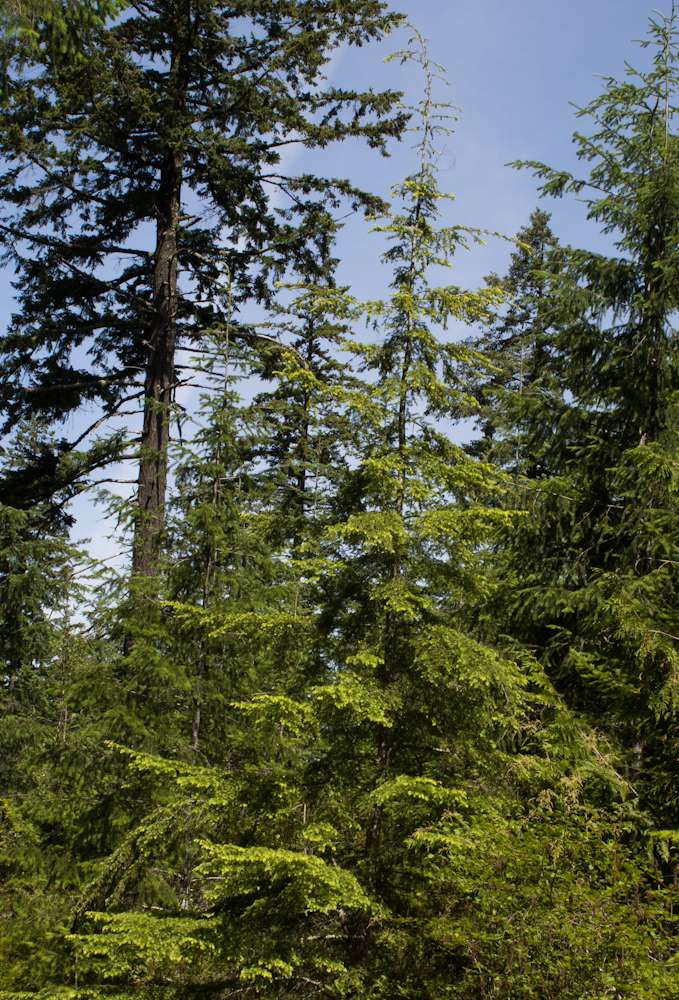
If we’re walking through a forest where we don’t see the foliage of the trees very well, then the trunk and bark can be used to distinguish western hemlock. The bark of western hemlock trunks tend to be finer-textured than that of Douglas-fir, but this can be a bit difficult to discern, and it depends on the ages of the trees that you’re looking at.
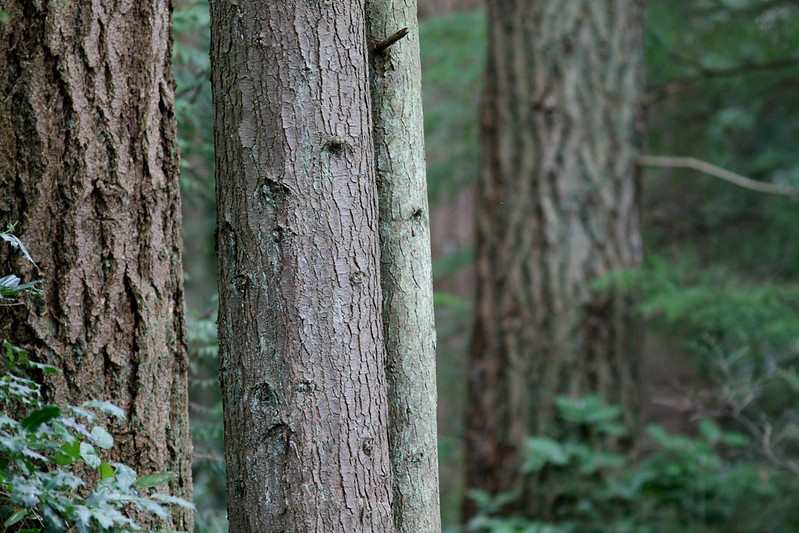
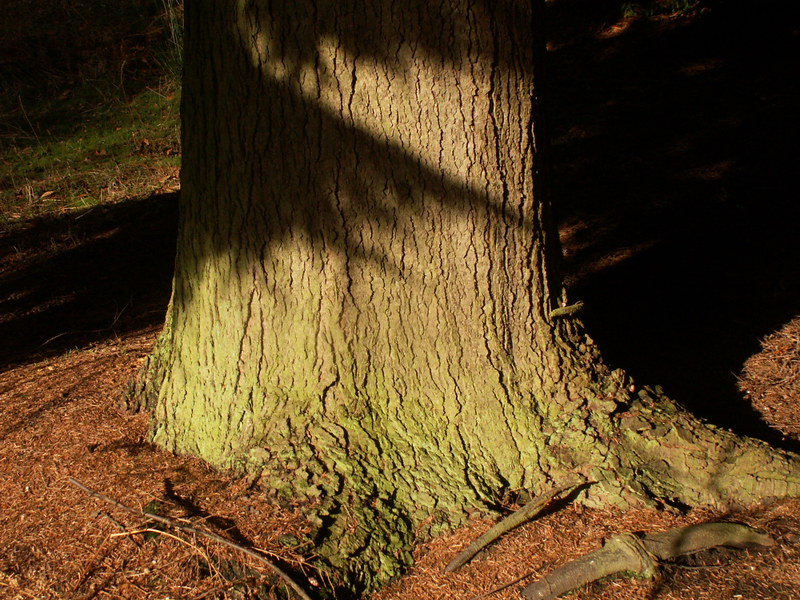
Let’s look more closely at the foliage of western hemlock. It’s the needles that give the tree its soft, feathery look.
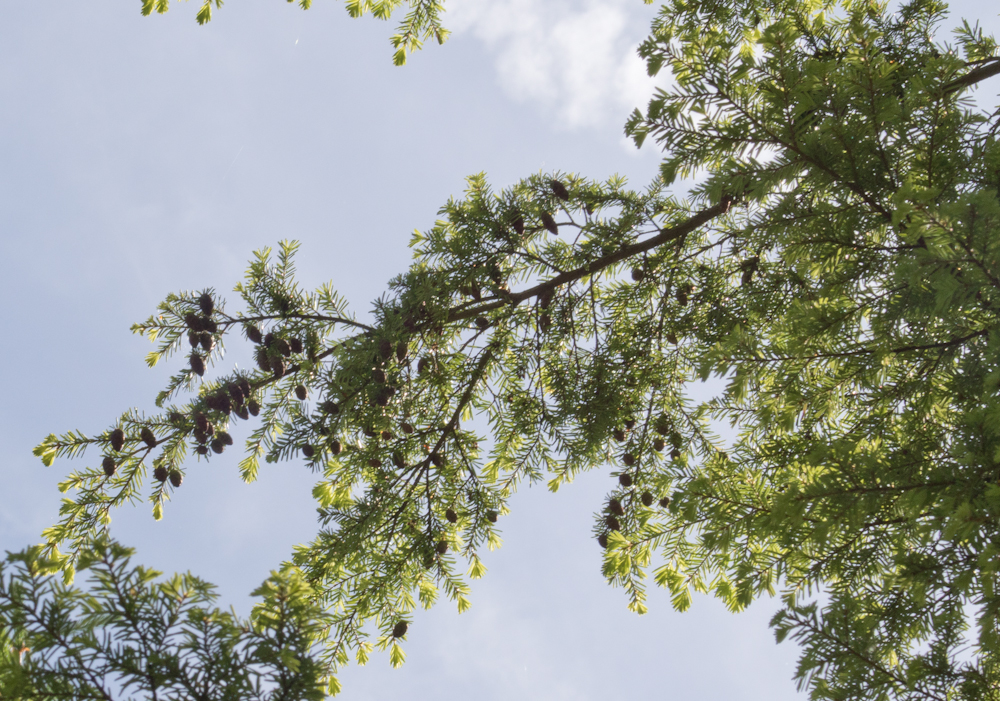
The branches of western hemlock are soft and yielding to the touch. The sprigs are fairly flat because of the way the needles are arranged along the twig. A Douglas-fir branch is stiffer, and the needles are sharper and more evenly distributed all around the twig.
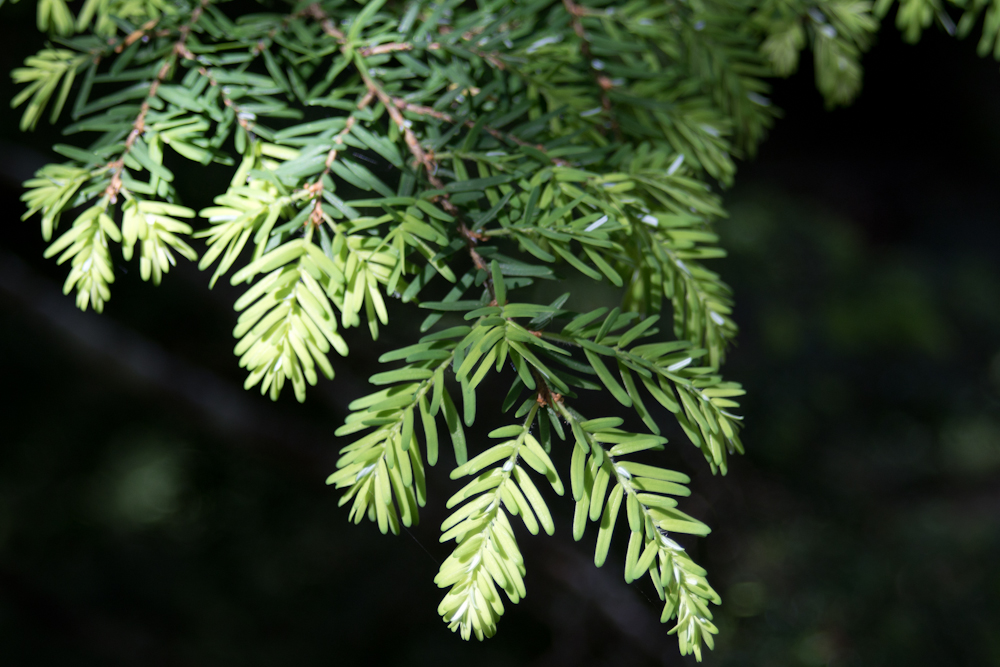
The species epithet of western hemlock is ‘heterophylla’, meaning ‘different leaves’. Note how the name refers to the different-length needles along the twig.
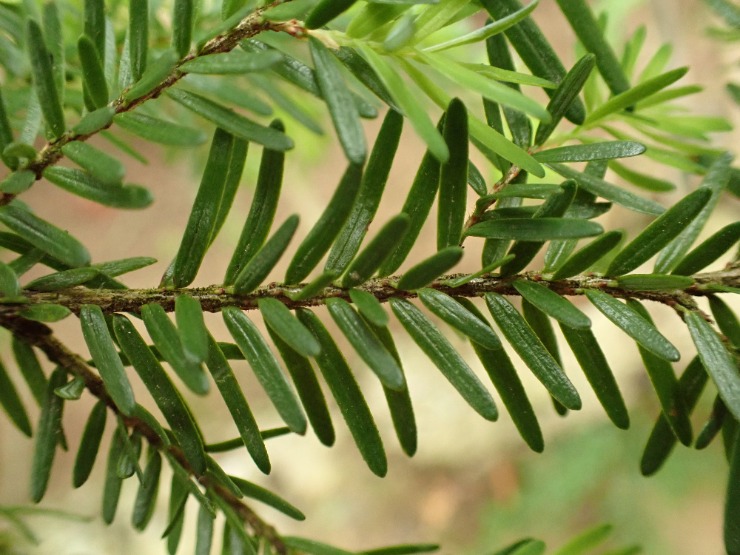
Like the other conifers described on this site (Douglas-fir, shore pine, western redcedar), western hemlock makes male pollen-bearing and female egg/seed-bearing cones.
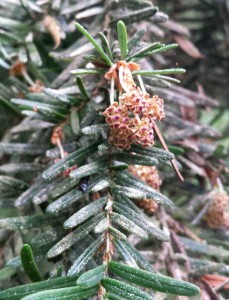
The female cones of western hemlock are much smaller than those of Douglas-fir, and rounder and less woody compared to those of western redcedar.
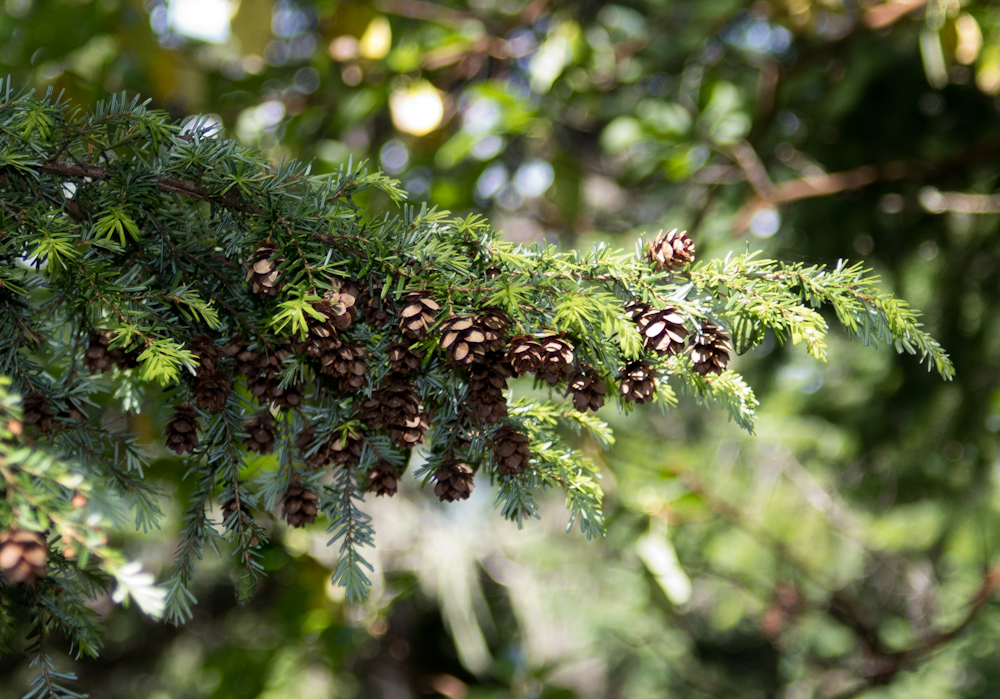
For a comparison between leaf/needle and female cone characteristics of the four conifers listed on this site, please see this conifer comparison page.